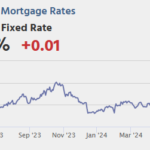The business world is full of clichés about customer satisfaction. “Customer comes first.” The customer is king. The customer is always right. These philosophies may work in principle, but they fall short strategically.
Customer satisfaction is much more nuanced than many catchy phrases imply. Satisfaction can come from a better purchasing experience, better customer service, product quality, or all of the above. Getting each aspect right requires more than just a positive attitude.
Powerful customer relationship management (CRM) is built on identifying engagement patterns and opportunities within your existing customer data so you can take specific actions to improve customer satisfaction. .
What is a CRM strategy?
The purpose of a customer relationship management (CRM) strategy is to customer relationship Drive business growth with valuable insights from customer behavior data.
A CRM strategy allows you to make business decisions based on data collected through your company’s various touchpoints. customer journey. For example, when a customer discovers your business on social media or reads a blog post on your website. referral code. A CRM strategy applies these learnings to improve the customer experience across different aspects of your business.
For example, if you want to improve your overall customer satisfaction score, a CRM strategy can help you identify areas where expectations are not being met. Or, if you want to increase brand awareness with your marketing campaigns, a successful CRM strategy can deliver targeted, personalized communications that resonate with potential customers.
What is a CRM system?
a CRM system is a tool that allows teams to organize customer data and analyze customer behavior.
CRM systems began in the 1980s as directory-style contact management tools for sales teams. Since then, they have evolved into comprehensive hubs that can be used by sales, marketing, and customer service teams, recording every aspect of customer interactions, from detailed profiles and behaviors to sales transactions and performance metrics. Did. CRM platforms not only store customer data, but also streamline customer communications across social media, email, and support chat, thereby enhancing order tracking, centralizing marketing efforts, and increasing customer retention.
CRM software typically integrates with project management tools like Asana, Trello, and Jira to ensure your team stays in sync and operates on the latest customer data. However, like any software tool, its success depends on context and application. Proper user training, integration with existing processes, and regular data maintenance are key elements to maximize potential effectiveness. A CRM system should support a better customer relationship management strategy, not the other way around.
Potential benefits of a CRM strategy
A CRM strategy is one of the best ways to build and maintain strong customer relationships. Here are some key areas where a CRM strategy can help.
Improve customer acquisition
A CRM strategy centralizes accurate and specific information. customer segment Create buyer personas based on the data you already have.
The potential to acquire customers by analyzing customer behavior, preferences, and interactions within these segments to adjust marketing efforts and reach target customers where they are most likely to be. can be increased.
Through web traffic data, you can also discover friction in the purchasing process.customers regularly Product page For example, you can improve your CTA language, change your page layout, or investigate factors that affect page load times without adding anything to your cart.
higher conversion rate
conversion speed The percentage of website users who take a desired action (such as signing up for a newsletter or completing a purchase) out of the total number of visitors. This is an essential benchmark for e-commerce businesses.
For example, implementing a CRM strategy allows you to collect detailed customer data; Personalized marketing campaigns. This targeted approach not only improves customer experience and engagement, but can also increase conversion rates by providing relevant offers and promotions that meet each customer’s needs and interests.
Improving customer satisfaction
Implementing ad-hoc, individual solutions can be time-consuming and result in duplication of effort between teams. CRM strategy is one of his ways to anticipate and meet customer needs.
If you are considering starting a loyalty program If you host in-person marketing events to strengthen customer relationships, a CRM tool can uncover those repeat customers and identify natural advocates within your customer base. Demographic insights and purchasing behavior data can contribute to more personalized shopping experiences and product recommendations. Centralized communications facilitates superior customer service with quick response times and a unified approach across different channels.
Customer journey clarity
A CRM strategy combined with a CRM system can help you better retain existing customers and attract new ones by providing visibility into the various stages of the customer lifecycle. For example, if you find that your ideal customer spends a lot of time on her TikTok, it might be a good idea to increase your presence on the platform. You might also consider considering industry trends or offering product highlights to increase customer engagement.
Better cooperation between teams
A CRM strategy centralizes customer data and allows internal teams to access and share valuable insights. A solid strategy combined with the right tools can help align goals and foster communication between departments.
For example, your sales team may have instant access to customer feedback collected by your support team, allowing for more personalized follow-up.
Make faster, more informed business decisions
If your CRM tool reveals what’s going on in your business through reports and analytics, your CRM strategy can help you make faster, data-driven decisions based on those reports. For example, you may decide to implement personalized email reminders or develop new reminders to address high cart abandonment rates. customer survey Pinpoint issues with your checkout process.
How to create an effective CRM strategy
- audit your business
- Define business goals
- Organize customer data and build buyer personas
- Map your customer journey
- Choose a CRM solution
Ultimately, the nature of the service you offer and the buying experience will determine the scope of your CRM strategy and how quickly you can implement the insights you gain from it. And like any business strategy, it evolves as you grow.
Here’s how to start building your CRM strategy.
1. Audit your business
The first step in creating a CRM strategy is discovery.If you haven’t done it yet, please do so SWOT analysis Understand your strengths, weaknesses, opportunities, and threats as a business. The foundation of your strategy is a comprehensive understanding of what sets you apart in the market, including your scope of offerings and the values that drive your customer experience.
2. Define business objectives
Next, outline the defined goals that your CRM strategy will help solve. While a CRM strategy in a B2B (business-to-business) environment may prioritize shortening sales cycles and reducing churn, a B2C (business-to-business) or direct-to-consumer (DTC) e-commerce CRM strategy may prioritize customer They are more likely to focus on satisfaction and customer satisfaction. retention or sales.
set Key performance indicators (KPIs) To measure success. For example, you can monitor: customer lifetime value (CLV) – Total revenue from customers over time – Tracks the effectiveness of your CRM strategy. An increase in CLV indicates that the approach is effective. When there is a downturn or stagnation, this data, combined with his CRM insights such as purchase history, customer feedback, and interaction patterns, can be used to enhance the purchasing experience or activate strategies to increase customer loyalty. Masu.
3. Organize customer data and build buyer personas
Let’s say you want to boost your marketing campaign. Return on investment (ROI). Start by analyzing your customer data by looking at purchase history, demographics, and engagement metrics within your CRM system. Create a buyer persona Reflect your existing customers and demographics. You can then use that information to craft targeted, value-driven messages for each distinct population, increasing the likelihood of overall engagement.
If there are any demographics you haven’t reached yet, outline their ideal customers as well. If you’re starting from scratch and don’t have a lot of customer data, fill in the gaps with market research.
4. Map the customer journey
Once you know your target audience, identify the touchpoints (like social media, marketing campaigns, newsletter signups, etc.) and different stages of the buying process (like website visits and browsing behavior) that drive discovery and brand awareness. . . We’ll show you how to define and reward customer loyalty post-purchase, and how to gather customer insights through customer surveys and interviews to improve the entire process.
Think of your CRM strategy as a customer-driven version of your sales pipeline or sales funnel. By splitting your pipeline into precise components, you can address opportunities and smooth out bumps in the road to conversion.
5. Choose a CRM solution
To execute your CRM strategy, invest in a CRM platform. Centralizing customer data using CRM technology not only improves collaboration and coordination between teams, but also helps automate important tasks such as data management. It can provide evidence of what’s working and highlight areas for improvement.
lots of CRM software Other tools offer similar functionality, but they are not foolproof. When choosing between many solutions, consider how easy it is to use on a daily basis, given your current team and bandwidth. Does it integrate with your team’s existing internal processes? Do its key features support the business goals outlined in the steps above? Is it built with small to medium sized businesses in mind? Or enterprise-level companies? Is the pricing for you?
Frequently asked questions about CRM strategy
Why is it important to have a CRM strategy?
If you try to manage customer data without a CRM strategy, you’ll miss the forest for the trees. A CRM strategy helps you streamline your customer data and make strategic decisions without getting lost in each transaction.
What are the common mistakes to avoid when creating a CRM strategy?
When developing your CRM strategy, it’s important to choose a CRM tool that fits your specific needs. Focus on processing and leveraging customer information, ensure the systems you choose support critical functions such as marketing automation and customer service, and prioritize data quality management for accurate and insightful reporting. We guarantee.
How do you create a CRM strategy?
To create a solid customer relationship management strategy, understand your current business goals, map how your target users and buyer personas move through the customer journey using customer data, and understand these data points. Set up a CRM system to help collect and analyze insights.
What are the key elements of a CRM strategy?
CRM strategies vary by business, but typically cover customer behavior and acquisition, marketing channels, customer service, and business reporting.







